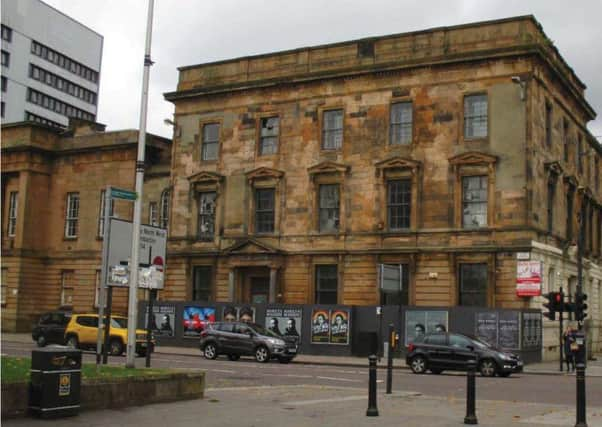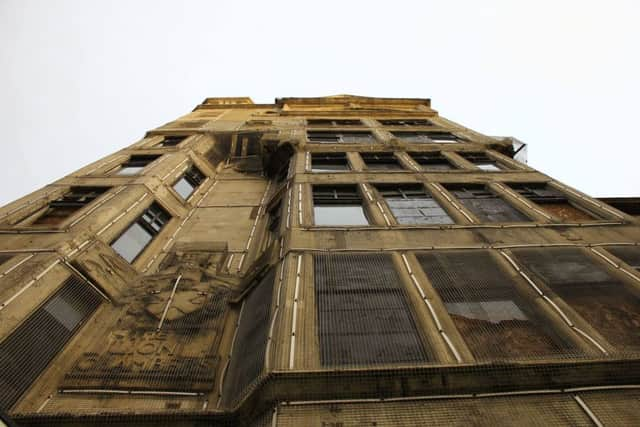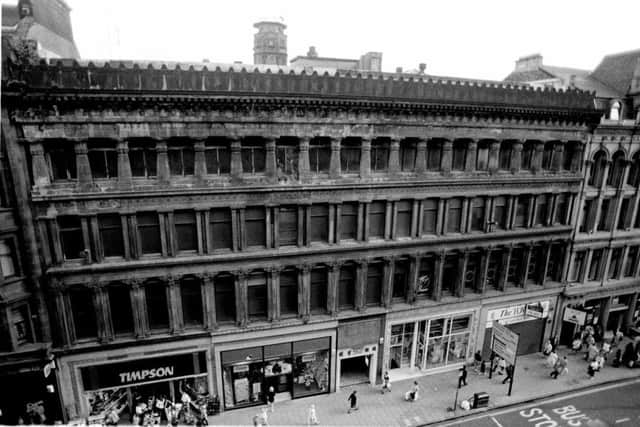Glasgow School of Art not the city's only architectural masterpiece under threat


It was a historic property in Glasgow city centre with a long and storied past before it was badly damaged by fire and then eventually demolished.
This was the fate of 286 Clyde Street, a Grade B-listed tenement with classical features that stood on a prominent riverside site - and it could yet be the fate of the Mackintosh building at Glasgow School of Art.
Advertisement
Hide AdThe difference between the two is the Mack, as it is popularly known, will most likely rise again, even if it has to be rebuilt from the ground up following the devastating blaze that left little but its exterior walls still standing.


The block at Clyde Street was instead demolished last month to make way for a new commercial development after its previous owners failed to maintain it.
One city councillor, Hanzala Malik, commented at the time: “We seem to be faced with a fait accompli. The previous owners have allowed it to get to that stage and then we have to pick up the pieces. It’s criminal and we need to do something about it.”
It’s a familiar story that’s been heard across the city over the last 50 years.
Glasgow does not lack landmark buildings being left in a state of serious disrepair. There are several examples that are listed Grade A, like the Mack, a status reserved for “buildings of national or international importance”.


Two of the best known examples are the work of Alexander ‘Greek’ Thomson. Alongside Charles Rennie Mackintosh, he was named in 1966 by the influential American architectural historian Henry-Russell Hitchcock as one of the greatest architects of the previous 150 years.
Advertisement
Hide AdThomson’s church at Caledonia Road in the Gorbals was burnt out in 1965 and has stood as an empty shell ever since.
Meanwhile his unique Egyptian Halls, which stand opposite Central Station, face an uncertain future after years of wrangling between the dilapidated building’s private owners and the local authority.
Advertisement
Hide AdAnother notable city centre building in need of repair is the Lion Chambers, described as “an astonishing monument to Glasgow’s architectural audacity”.
Completed in 1907, the eight-storey building is the work of John Gaff Gillespie and James Salmon, the later being a personal friend of Mackintosh.
It was a pioneering example of how reinforced concrete could be used, but has lain empty since 2010 and has been encased in a protective mesh since 2001 after its exterior was found to be unsafe.
To the north of the city centre stands the shell of Springburn Winter Gardens, once the largest glasshouse in Scotland, and paid for in part by one of Glasgow’s many Victorian industrialists.
Work to stabilise the structure was carried out last year and plans are afoot for a full restoration - if funding can be secured in the future.
Such examples led Paul Sweeney, MP for Glasgow North East, to call for a strategy to protect the city’s built heritage.
Advertisement
Hide AdSpeaking in the House of Commons earlier this month, he said: “Given that Glasgow needs a more preventive, comprehensive strategy for preserving its ageing stock of Victorian architecture, much of which is vulnerable to fire, what plans do the Government have to support a review of the way that heritage buildings are managed and safeguarded, with fire prevention policy as a priority?”
Scottish secretary, David Mundell, replied “I take on board the points he makes about safety issues in buildings.”
Advertisement
Hide AdA spokesman for Glasgow City Council told The Scotsman that owners of listed buildings had a responsibility to maintain them.
They added: “The bottom line is we will support our built heritage and offer advice where appropriate.”
